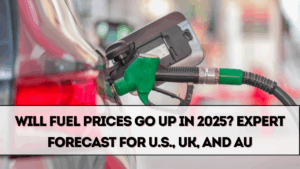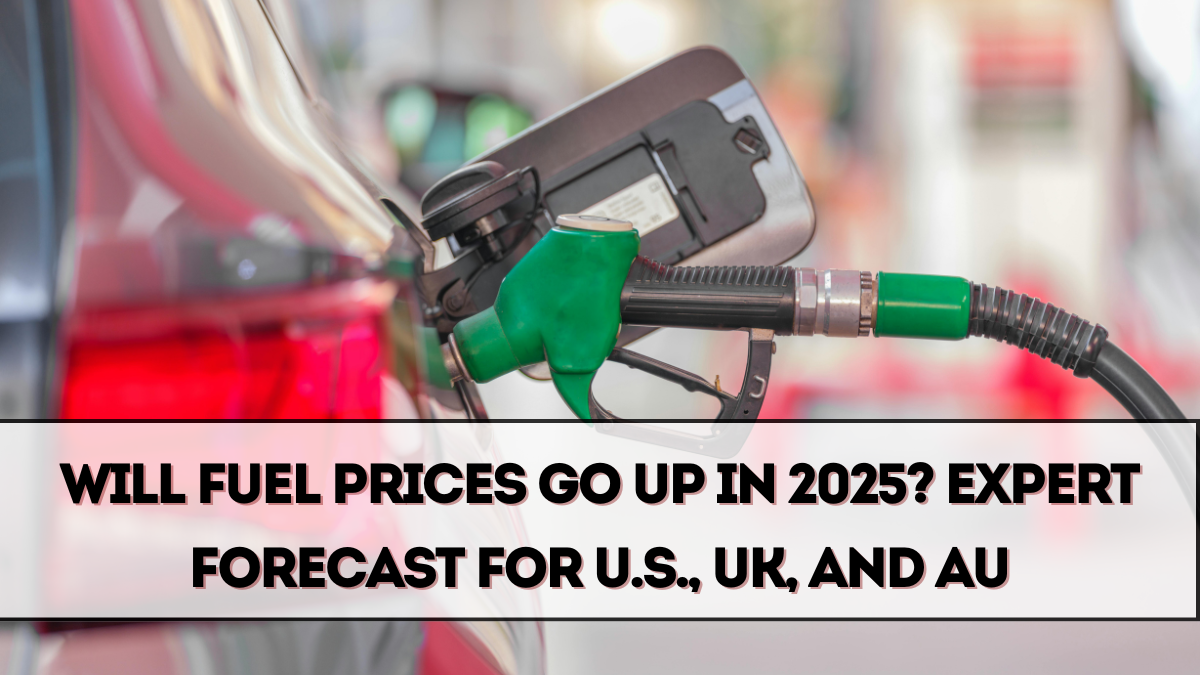Fuel prices remain one of the most closely watched economic indicators worldwide. From commuters to businesses, fluctuations in petrol and diesel costs affect household budgets, inflation, and trade. In 2025, experts are analyzing multiple factors to provide a fuel price prediction for key regions such as the United States (U.S.), the United Kingdom (UK), and Australia (AU).
With global energy markets influenced by geopolitics, supply-demand dynamics, and climate policies, predictions for fuel costs in 2025 help consumers and policymakers prepare for the months ahead.

Key Factors Influencing Fuel Prices in 2025
Several interconnected elements shape fuel costs across global markets:
-
Crude Oil Prices: The benchmark for petrol and diesel, set by supply levels from OPEC+ nations.
-
Geopolitical Events: Conflicts or trade disputes can disrupt oil flows, driving price spikes.
-
Currency Fluctuations: Oil is traded in U.S. dollars, meaning weaker local currencies can increase domestic prices.
-
Green Energy Transition: Governments are incentivizing EVs and renewables, influencing demand for fossil fuels.
-
Inflation and Economic Growth: Strong economies typically push demand higher, impacting prices.
In 2025, these factors converge to create moderate but noticeable price shifts across the U.S., UK, and Australia.
Fuel Price Forecast – United States
In the U.S., fuel prices are expected to remain relatively stable but with localized fluctuations:
-
Average Petrol Price: Forecast at USD $3.40–$3.70 per gallon by late 2025.
-
Diesel Prices: Likely to stay slightly higher at USD $3.80–$4.10 per gallon, reflecting freight demand.
-
Influencing Factors: U.S. shale production is helping stabilize supply, while global oil market volatility may cause short-term spikes.
-
Policy Impact: Federal incentives for EVs may reduce long-term petrol demand, easing pressure on prices.
Drivers should budget for modest increases compared to 2024 levels.
Fuel Price Forecast – United Kingdom
The UK faces a more challenging picture due to taxation and currency effects:
-
Average Petrol Price: Expected to range between £1.55–£1.70 per litre by the end of 2025.
-
Diesel Prices: Predicted at £1.65–£1.85 per litre, higher due to stronger commercial demand.
-
Taxation: Fuel duties and carbon levies continue to be significant price drivers.
-
Exchange Rate Effects: A weaker pound could amplify global oil price increases.
With the countdown to the 2030 petrol and diesel ban, UK fuel costs are also shaped by climate-driven policies encouraging EV adoption.
Fuel Price Forecast – Australia
Australia’s vast geography and reliance on imports make fuel prices sensitive to global changes:
-
Average Petrol Price: Forecast between AUD $1.85–$2.10 per litre by September 2025.
-
Diesel Prices: Expected to average AUD $2.00–$2.25 per litre, reflecting freight-heavy demand.
-
Regional Variations: Prices are often higher in rural and remote regions due to transport costs.
-
Policy Measures: Federal fuel excise and potential road user charges could influence consumer costs.
Australians should prepare for gradual but steady increases, especially in diesel.
Global Trends Driving Fuel Predictions
Beyond regional differences, several global patterns are shaping 2025 fuel prices:
-
EV Transition: Rising EV adoption reduces petrol demand in urban centers but diesel remains crucial for freight.
-
OPEC+ Production Policies: Output adjustments directly impact global price benchmarks.
-
Geopolitical Risks: Ongoing tensions in oil-rich regions keep markets volatile.
-
Green Tax Policies: Many governments are imposing levies to discourage fossil fuel use.
These overlapping trends suggest fuel prices may see moderate hikes, though not extreme surges unless major geopolitical disruptions occur.
Impact on Consumers and Businesses
Fuel price changes affect various sectors differently:
-
Households: Rising prices increase commuting and travel costs.
-
Logistics Firms: Diesel hikes add pressure on freight and delivery businesses.
-
Retail Prices: Higher transport costs feed into consumer goods pricing.
-
Alternative Energy Adoption: Rising petrol and diesel costs make EVs and hybrids more attractive.
Consumers are advised to plan fuel budgets carefully and explore energy-efficient alternatives.
Coping Strategies for Rising Fuel Prices
Drivers and businesses can take proactive steps to manage rising fuel costs:
-
Adopt Fuel-Efficient Vehicles: Hybrid and EV options help reduce dependence on petrol.
-
Use Fuel Apps: Tracking apps assist drivers in finding cheaper stations.
-
Optimize Routes: Businesses can reduce costs with smarter logistics planning.
-
Consider Carpooling or Public Transport: Helps households cut commuting expenses.
-
Budget Planning: Families can prepare for higher monthly fuel expenses.
These measures help offset financial strain while aligning with environmental goals.
Future Outlook for 2026 and Beyond
Looking ahead, experts predict:
-
Steady Increases: Moderate rises in fuel prices until 2027, depending on oil supply.
-
Greater EV Impact: EV adoption could significantly cut petrol demand by the end of the decade.
-
Policy Shifts: Stricter carbon taxes may further raise costs for fossil fuels.
-
Renewable Alternatives: Growth in biofuels and hydrogen may reshape the market entirely.
The Fuel Price Prediction 2025 shows increases across U.S., UK, and AU markets, but the long-term outlook depends heavily on green policies and EV adoption rates.
FAQs
What will fuel prices be in the U.S. in 2025?
Petrol is forecast at USD $3.40–$3.70 per gallon, while diesel will average USD $3.80–$4.10 per gallon.
How much will petrol cost in the UK by late 2025?
Experts predict £1.55–£1.70 per litre for petrol and £1.65–£1.85 per litre for diesel.
Will fuel prices rise in Australia in 2025?
Yes, petrol could reach AUD $2.10 per litre and diesel AUD $2.25 per litre, with higher rates in remote regions.
What global factors affect 2025 fuel prices?
Crude oil supply, OPEC+ decisions, EV adoption, carbon taxes, and geopolitical risks.
Click here to know more.
